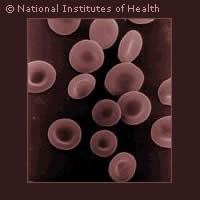Researchers identify new mechanism of blood vessel formation
A molecule which regulates the formation of blood vessels has been identified by an international team of researchers. Their findings could lead to the development of new cancer drugs. The study, which was partly funded by the EU under the Sixth Framework Programme (FP6), is published online by the journal Nature. All tissues need a good blood supply to survive and grow. New blood vessels are formed when a 'shoot' branches out from an existing blood vessel. These shoots lengthen and join up with other vessels, creating communicating networks of channels. Called angiogenesis, this process is important in foetal development, organ and tissue development and in wound healing. However, it is not just healthy tissues that need a blood supply to survive; cancers and tissues arising from chronic inflammatory diseases also rely on a steady supply of blood. Without new blood vessels, tumours can grow no larger than 1-2 millimetres. With this in mind, many researchers have sought to stop cancer growth by preventing the development of blood vessels in the tumour. All of the therapies developed so far have targeted the growth factor VEGF (Vascular Endothelial Growth Factor), which is involved in blood vessel formation. These anti-angiogenic therapies have proven effective in the treatment of colon cancer and Age-dependent Macula Degeneration, a common eye disease. Now the researchers, lead by Dr Mats Hellström of the Karolinska Institute in Sweden, have identified another molecule which plays a key role in angiogenesis, a factor called Dll4 (Delta-like 4). The researchers found that inhibiting the activity of Dll4 leads to an increase in the number of offshoots from the main blood vessel, while activating Dll4 leads to a reduction in the number of branches. Furthermore, in actively sprouting blood vessels, cells where Dll4 is deleted become tip cells. Tip cells are the cells which lead each new sprout, and the researchers discovered that VEGF is also involved in selecting which cells will become tip cells. 'Together, our results suggest that Dll4-Notch1 signalling between the endothelial cells within the angiogenic sprout serves to restrict tip-cell formation in response to VEGF, thereby establishing the adequate ratio between tip and stalk cells required for correct sprouting and branching patterns,' the researchers write. In this way, Dll4 ensures that the tissue has the right density of blood vessels to ensure a steady supply of blood; too much blood entering a tissue is just as damaging as too little. The researchers believe that Dll4 could be a target for new therapies based on restricting the formation of blood vessels in cancerous tumours and other growths. 'We can now develop ways of boosting the effect of existing anti-angiogenic therapies, and maybe we can even start to treat tumour types that do not currently respond to anti-angiogenic drugs,' commented Dr Hellström.
Countries
Sweden



